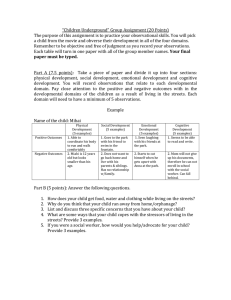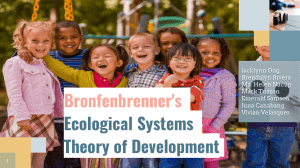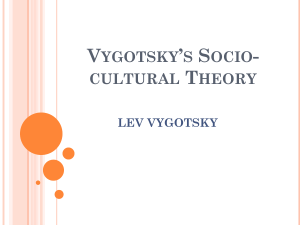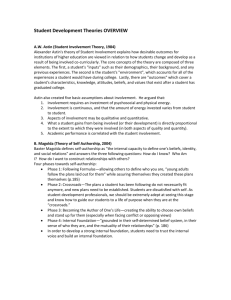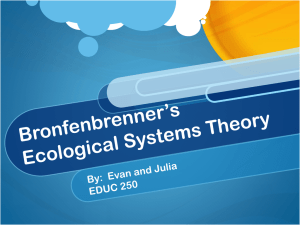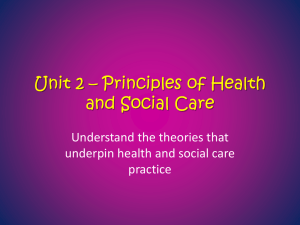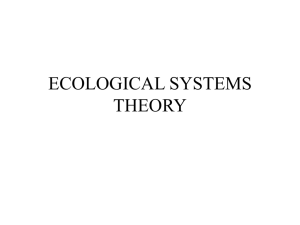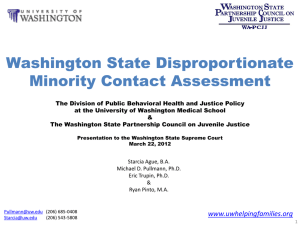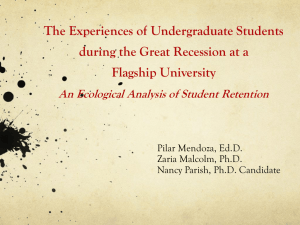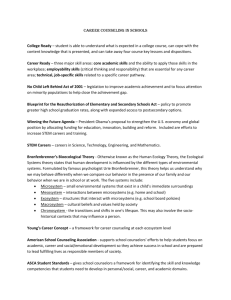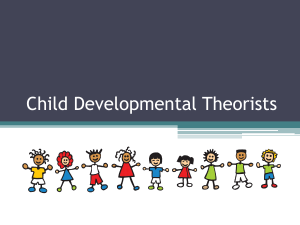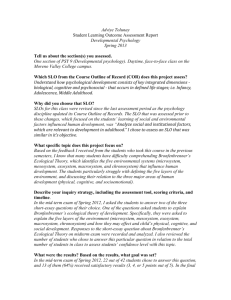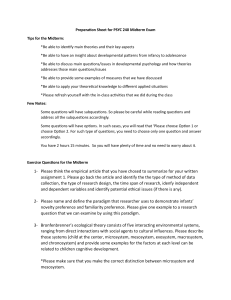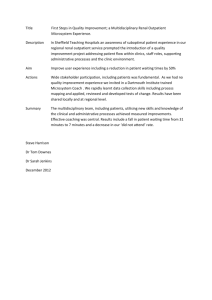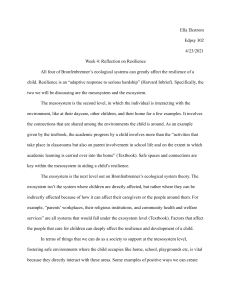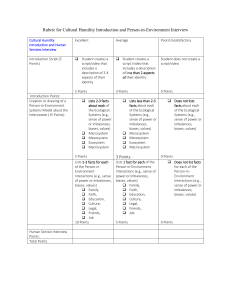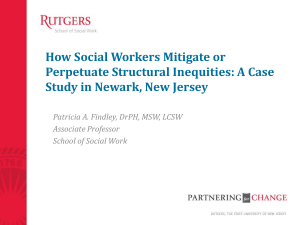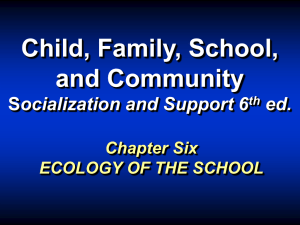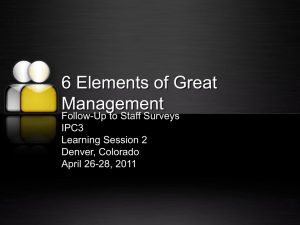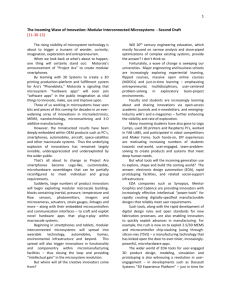bronfenbrenner's ecological systems theory
advertisement
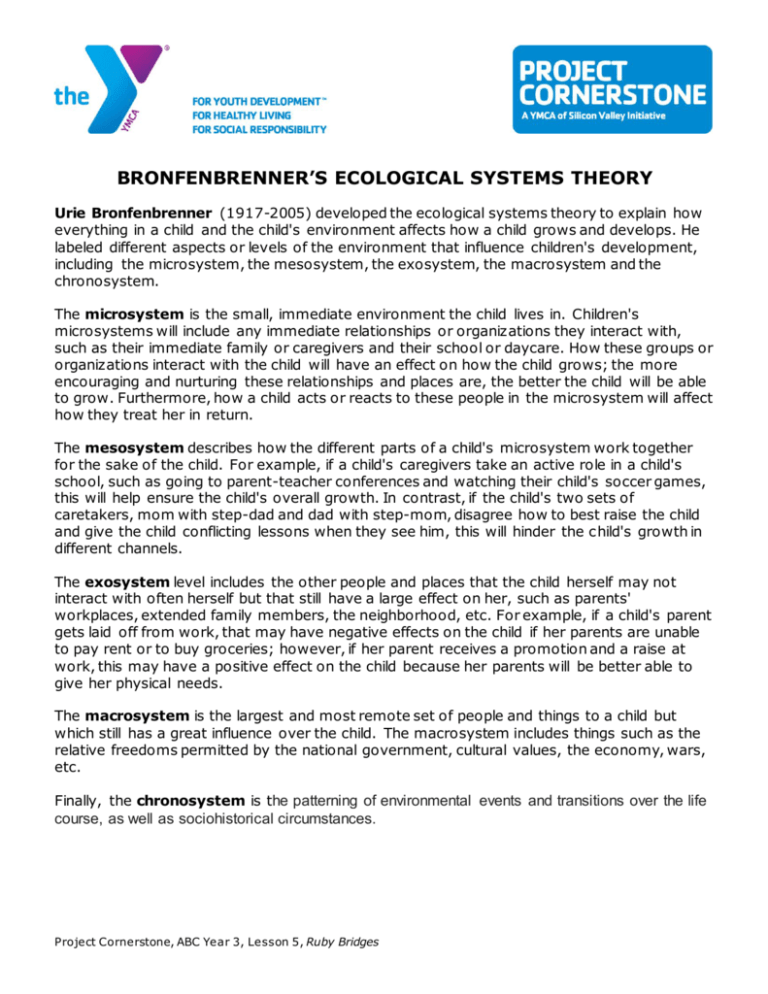
BRONFENBRENNER’S ECOLOGICAL SYSTEMS THEORY Urie Bronfenbrenner (1917-2005) developed the ecological systems theory to explain how everything in a child and the child's environment affects how a child grows and develops. He labeled different aspects or levels of the environment that influence children's development, including the microsystem, the mesosystem, the exosystem, the macrosystem and the chronosystem. The microsystem is the small, immediate environment the child lives in. Children's microsystems will include any immediate relationships or organizations they interact with, such as their immediate family or caregivers and their school or daycare. How these groups or organizations interact with the child will have an effect on how the child grows; the more encouraging and nurturing these relationships and places are, the better the child will be able to grow. Furthermore, how a child acts or reacts to these people in the microsystem will affect how they treat her in return. The mesosystem describes how the different parts of a child's microsystem work together for the sake of the child. For example, if a child's caregivers take an active role in a child's school, such as going to parent-teacher conferences and watching their child's soccer games, this will help ensure the child's overall growth. In contrast, if the child's two sets of caretakers, mom with step-dad and dad with step-mom, disagree how to best raise the child and give the child conflicting lessons when they see him, this will hinder the child's growth in different channels. The exosystem level includes the other people and places that the child herself may not interact with often herself but that still have a large effect on her, such as parents' workplaces, extended family members, the neighborhood, etc. For example, if a child's parent gets laid off from work, that may have negative effects on the child if her parents are unable to pay rent or to buy groceries; however, if her parent receives a promotion and a raise at work, this may have a positive effect on the child because her parents will be better able to give her physical needs. The macrosystem is the largest and most remote set of people and things to a child but which still has a great influence over the child. The macrosystem includes things such as the relative freedoms permitted by the national government, cultural values, the economy, wars, etc. Finally, the chronosystem is the patterning of environmental events and transitions over the life course, as well as sociohistorical circumstances. Project Cornerstone, ABC Year 3, Lesson 5, Ruby Bridges ●The MICROSYSTEM is the setting in which the individual lives. ●The MESOSYSTEM is about the relations between microsystems or connections between contexts. ●The EXOSYSTEM links between a social setting in which the individual does not have an active role and the individual’s immediate context. ●The MACROSYSTEM is defined as the culture in which individuals live. ●The CHRONOSYSTEM is the patterning of environmental events and transitions over the life course, as well as sociohistorical circumstances. Project Cornerstone, ABC Year 3, Lesson 5, Ruby Bridges
